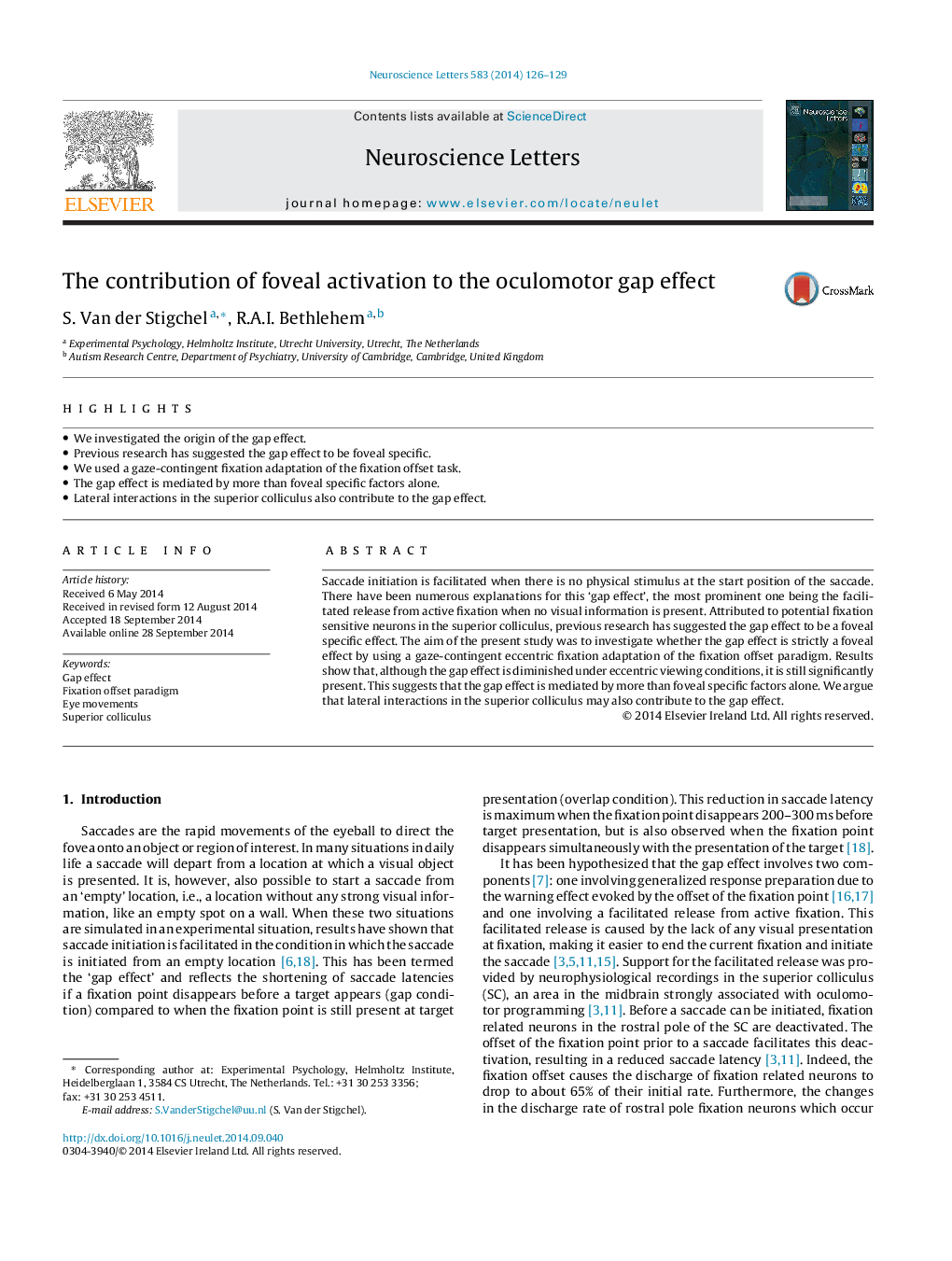| Article ID | Journal | Published Year | Pages | File Type |
|---|---|---|---|---|
| 4343566 | Neuroscience Letters | 2014 | 4 Pages |
•We investigated the origin of the gap effect.•Previous research has suggested the gap effect to be foveal specific.•We used a gaze-contingent fixation adaptation of the fixation offset task.•The gap effect is mediated by more than foveal specific factors alone.•Lateral interactions in the superior colliculus also contribute to the gap effect.
Saccade initiation is facilitated when there is no physical stimulus at the start position of the saccade. There have been numerous explanations for this ‘gap effect’, the most prominent one being the facilitated release from active fixation when no visual information is present. Attributed to potential fixation sensitive neurons in the superior colliculus, previous research has suggested the gap effect to be a foveal specific effect. The aim of the present study was to investigate whether the gap effect is strictly a foveal effect by using a gaze-contingent eccentric fixation adaptation of the fixation offset paradigm. Results show that, although the gap effect is diminished under eccentric viewing conditions, it is still significantly present. This suggests that the gap effect is mediated by more than foveal specific factors alone. We argue that lateral interactions in the superior colliculus may also contribute to the gap effect.
